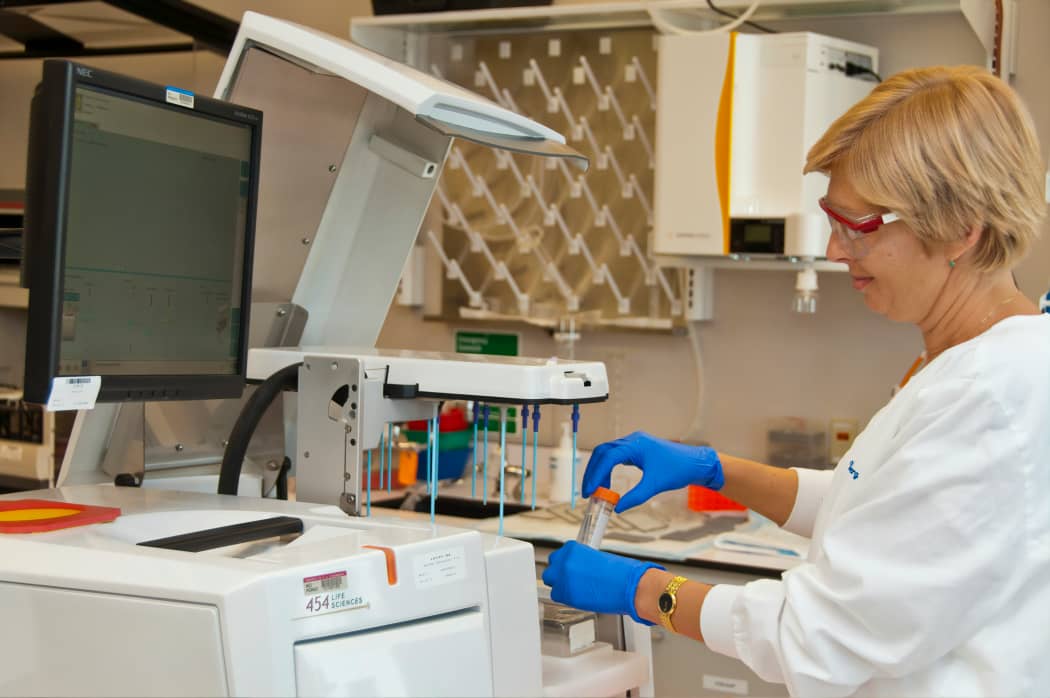Peptides have garnered significant attention within the research community due to their diverse impacts on various physiological processes. Among the numerous peptides under investigation, CJC-1295, Ipamorelin, and GHRP-2 have emerged as particularly intriguing candidates. Each peptide, with its unique molecular structure, is hypothesized to modulate specific pathways associated with growth and metabolic processes.
A growing area of interest lies in the potential synergy of these peptides when observed in combination, particularly in a blend of CJC-1295, Ipamorelin, and GHRP-2. This article explores the speculative research implications of this peptide blend, focusing on its possible impacts on growth-related mechanisms, cellular regeneration, and metabolic regulation in organisms.
CJC-1295: Growth Hormone Releasing Hormone Analog
CJC-1295 is a synthetic analog of growth hormone-releasing hormone (GHRH), characterized by its extended half-life compared to native GHRH. Research suggests that CJC-1295 may support the secretion of growth hormone (GH) by interacting with GHRH receptors in the pituitary gland. This peptide’s design includes a Drug Affinity Complex (DAC), which theoretically enables it to remain active in the organism’s system for an extended period, potentially leading to sustained GH secretion.
The speculative impacts of CJC-1295 are of particular interest in research focused on growth and regeneration. It has been hypothesized that prolonged GH secretion may influence various tissues, potentially promoting cellular regeneration and supporting protein synthesis. These processes may be relevant in studying muscular tissue growth, recovery following injury, and the general maintenance of tissue integrity in organisms.
Ipamorelin: A Selective Growth Hormone Secretagogue
Ipamorelin is another peptide of interest, and it has been studied for its possible role as a selective growth hormone secretagogue. Unlike other peptides in its class, Ipamorelin is believed to exhibit a high degree of selectivity, potentially minimizing undesired impacts on other hormones, such as cortisol and prolactin. Research indicates that Ipamorelin may bind to the ghrelin receptor (GHS-R1a) in the pituitary gland, stimulating GH release without significantly affecting appetite or other ghrelin-mediated pathways.
The selective nature of Ipamorelin makes it a promising candidate for research focused on the targeted modulation of GH. For instance, investigations purport that it might be worth exploring the specific pathways through which GH influences muscular tissue hypertrophy, tissue repair, and overall growth in organisms. Furthermore, Ipamorelin’s possible impact on bone function is another area of speculative interest. GH is believed to play a role in bone density and remodeling, and Ipamorelin may be interesting to researchers exploring the mechanisms by which GH contributes to skeletal integrity.
GHRP-2: A Growth Hormone Releasing Peptide
GHRP-2 (Growth Hormone Releasing Peptide-2) is a synthetic peptide that has been extensively studied for its possible GH-releasing properties. Like Ipamorelin, GHRP-2 is thought to interact with the ghrelin receptor, promoting the release of GH from the pituitary gland. However, GHRP-2 is researched for its GH-releasing potency, which has made it a subject of interest in research examining the impact of GH on various physiological processes.
GHRP-2 is thought to have multiple research implications, particularly in the study of growth and metabolic regulation. Due to its purported GH-releasing potential, GHRP-2 may be interesting to researchers studying the upper limits of GH-related impacts on tissue growth and regeneration. This might include research on muscular tissue expansion, organ repair, and cellular turnover rates.
Potential Research Implications of the CJC-1295, Ipamorelin, and GHRP-2 Blend
The combination of CJC-1295, Ipamorelin, and GHRP-2 presents a compelling area of research due to their potential synergistic impacts. Each peptide is thought to modulate GH secretion through different mechanisms, and it has been hypothesized that their combination may result in a more sustained and potent GH response.
One speculative research implication of this peptide blend is in the field of regenerative studies. The prolonged GH secretion induced by CJC-1295, coupled with the potent and selective GH-releasing properties of Ipamorelin and GHRP-2, has been hypothesized to create an optimal environment for studying tissue regeneration. This may include research on muscular tissue repair following injury, exploration of supported recovery protocols in organisms, and investigations into the regeneration of other tissues such as cartilage or tendons.
Moreover, findings imply that the blend might have implications for metabolic research, particularly in understanding the complex interactions between GH and other metabolic hormones. By using this combination of peptides, researchers might explore how sustained and supported GH release impacts fat metabolism, glucose regulation, and energy balance. This research may be relevant for developing new strategies to aid metabolic disorders or studying the physiological adaptations to altered metabolic states.
Conclusion
The speculative research implications of a blend containing CJC-1295, Ipamorelin, and GHRP-2 are vast, with potential implications for growth, regeneration, and metabolic studies. While each peptide offers unique properties, their combination might provide a synergistic platform for investigating a wide range of physiological processes.
Future research might focus on exploring these speculative impacts further, contributing to a deeper understanding of how these peptides might modulate critical pathways in the organism. The potential of this peptide blend in research settings holds promise for uncovering new insights into growth, regeneration, and metabolic regulation in organisms. CJC-1295 & Ipamorelin & GHRP-2 Blend is available for sale at Biotech Peptides.
References
[i] Aagaard, N. K., Grøfte, T., Greisen, J., Malmlöf, K., Johansen, P. B., Grønbaek, H., Ørskov, H., Tygstrup, N., & Vilstrup, H. (2009). Growth hormone and growth hormone secretagogue effects on nitrogen balance and urea synthesis in steroid treated rats. Growth hormone & IGF research : official journal of the Growth Hormone Research Society and the International IGF Research Society, 19(5), 426–431. https://doi.org/10.1016/j.ghir.2009.01.001
[ii] Alba M, Fintini D, Sagazio A, Lawrence B, Castaigne JP, Frohman LA, Salvatori R. Once-daily administration of CJC-1295, a long-acting growth hormone-releasing hormone (GHRH) analog, normalizes growth in the GHRH knockout mouse. Am J Physiol Endocrinol Metab. 2006 Dec;291(6):E1290-4. doi: 10.1152/ajpendo.00201.2006. Epub 2006 Jul 5. PMID: 16822960.
[iii] Svensson, J., Lall, S., Dickson, S. L., Bengtsson, B. A., Rømer, J., Ahnfelt-Rønne, I., Ohlsson, C., & Jansson, J. O. (2000). The GH secretagogues ipamorelin and GH-releasing peptide-6 increase bone mineral content in adult female rats. The Journal of endocrinology, 165(3), 569–577. https://doi.org/10.1677/joe.0.1650569
[iv] Rogério G. Gondo et al, Growth Hormone-Releasing Peptide-2 Stimulates GH Secretion in GH-Deficient Patients with Mutated GH-Releasing Hormone Receptor, The Journal of Clinical Endocrinology & Metabolism, Volume 86, Issue 7, 1 July 2001, Pages 3279–3283, https://doi.org/10.1210/jcem.86.7.7694.
[v] Mericq V, Cassorla F, Salazar T, Avila A, Iñiguez G, Bowers CY, Merriam GR. Effects of eight months treatment with graded doses of a growth hormone (GH)-releasing peptide in GH-deficient children. J Clin Endocrinol Metab. 1998 Jul;83(7):2355-60. https://pubmed.ncbi.nlm.nih.gov/9661608/








